| Andrea Schmidt-Futterer Costume Designer |
 |
| In the production's most striking invention, costume designer Andrea Schmidt-Futterer clothes the Angel in sumptuous royal blue with a single arching wing -- a detail that is all the more imaginative and unforgettable for being so aeronautically unsound. (Review Saint Francois D'Assisev-2002) |
 |
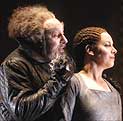 |
| Con: In Lehnhoff's production, they are dressed in bulky silver-colored suits that made them look like fire hydrants clad in Samurai armor, costumes that reduced their movements to ungainly waddling and stiff, mechanical gestures that clashed with the spirit and feel of the music.
In Lehnhoff's production, however, the maidens look from the waist up like mutant Geishas and from the waist down like the Daleks from Dr. Who? Instead of spinning wool, some of them just spin like tops, while the others move their arms in jerky, robotic gestures. Again, the whole scene clashes with the setting and the spirit of the music. |
| Pro: Andrea Schmidt Futterer�s costume designs are striking enough (less bland than her contributions to Lehnhoff�s futuristic Parsifal seen here in 2001), and she creates an effective, immediately legible contrast with the conventionally human look of Senta (a plain, loose gray dress) and Erik (more a nineteenth-century bourgeois than a rustic hunter). The old-world look of these two aligns them both with the Dutchman (outfitted in a dignified black cloak with old-Dutch white collar and black top hat) in opposition to the cartoonish sci-fi mutant appearance of the supposedly human community they inhabit. |
 |
 |
| We Can Fly |
| SFO 2005-2006 Season La Forza del Destino |
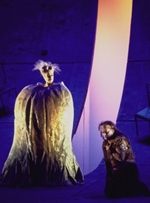 |
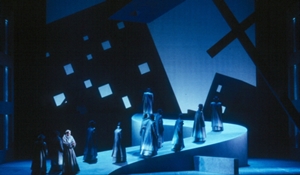 |
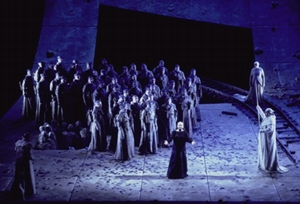 |
| On February 2, 2002 the Lyric Opera of Chicago presented Richard Wagner's last opera, Parsifal, in a production by Nikolaus Lehnhoff seen previously at the English National Opera in 1999 and at the San Francisco Opera in 2000. Raimund Bauer's minimal scenery showed Monsalvat to be a bleak wasteland, possibly the result of a nuclear war. Even the Flower Maidens had to make do without a natural setting. Andrea Schmidt-Futterer's softly grayed costumes also contributed to the lack of color on stage, but they did present some thought-provoking images-Review |
| Costume designer ANDREA SCHMIDT-FUTTERER, a native of Mannheim, began her career as costume assistant at the Schaub�hne Berlin resulting in a long association with the Schauspielhaus Bochum. Since 1995, she has worked in Vienna, Berlin, Cologne, Zurich and Hamburg in collaboration with several leading directors. She has also been part-time professor of costume design at the Hochschule f�r Bildende K�nste, Hamburg. Most recently, her creations were seen at the Monnaie in Brussels (From the House of the Dead), Hamburg Staatsoper (Armide), Frankfurt Staatsoper (Le Nozze di Figaro, Die Lustige Witwe), Deutsche Staatsoper Berlin (Lulu), Munich's Bavarian State Opera (premiere of Manfred Trojahn's Was ihr Wollt, Fidelio), English National Opera (Parsifal) and the Salzburg Festival (Lulu, Busoni's Doktor Faust). Among her forthcoming engagements are Der Fliegende Holl�nder for the Lyric Opera of Chicago and the Metropolitan Opera premiere of Doktor Faust.-SFO Profile |
| Anyone can Google and get this information that I have placed here in one place for convenience. |
 |
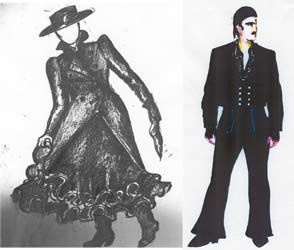 |
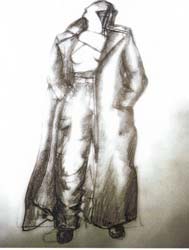 |
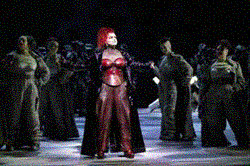 |
 |
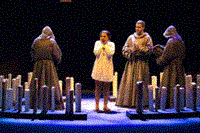 |
| The costume and set designs, by Andrea Schmidt-Futterer and Roland Aeschlimann respectively, present a darker Forza . . . expressed by sanguinolent cross-bearer, by the realistic grittiness of the military costumes, similar to the Desert Storm outfits, the exposed�fake and sagging- breasts of the prostitutes who looked like they escaped Mad Max, the KKK-like pilgrims, the mummified necropolis of the last act./Review |